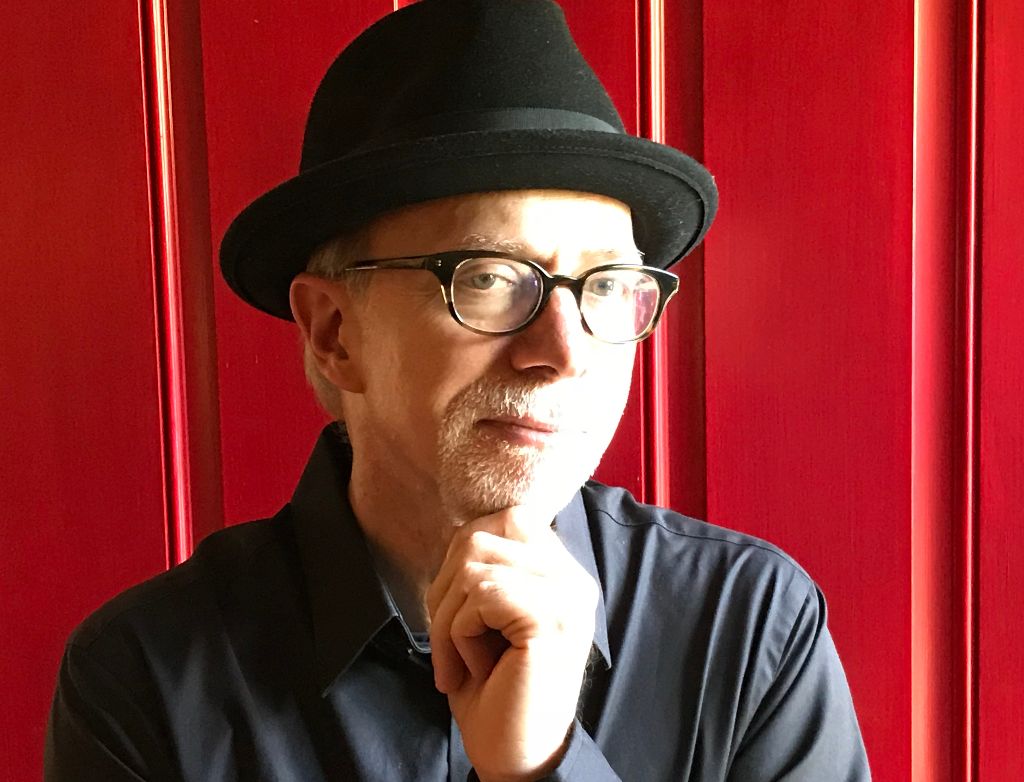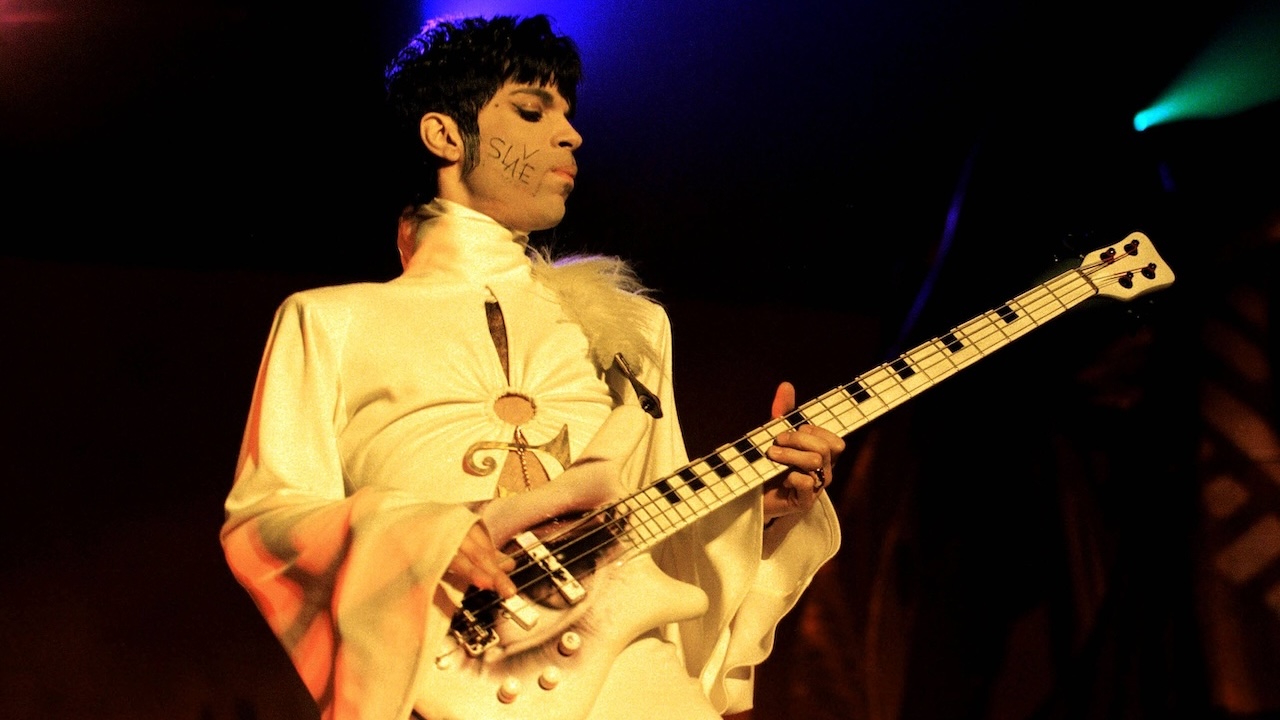“It was the classic sob story in school – I was a bit of an outcast and didn’t make friends. The guitar was my release and my escape”: Sophie Lloyd went from filming YouTube covers to touring arenas with Machine Gun Kelly – she recounts her meteoric rise
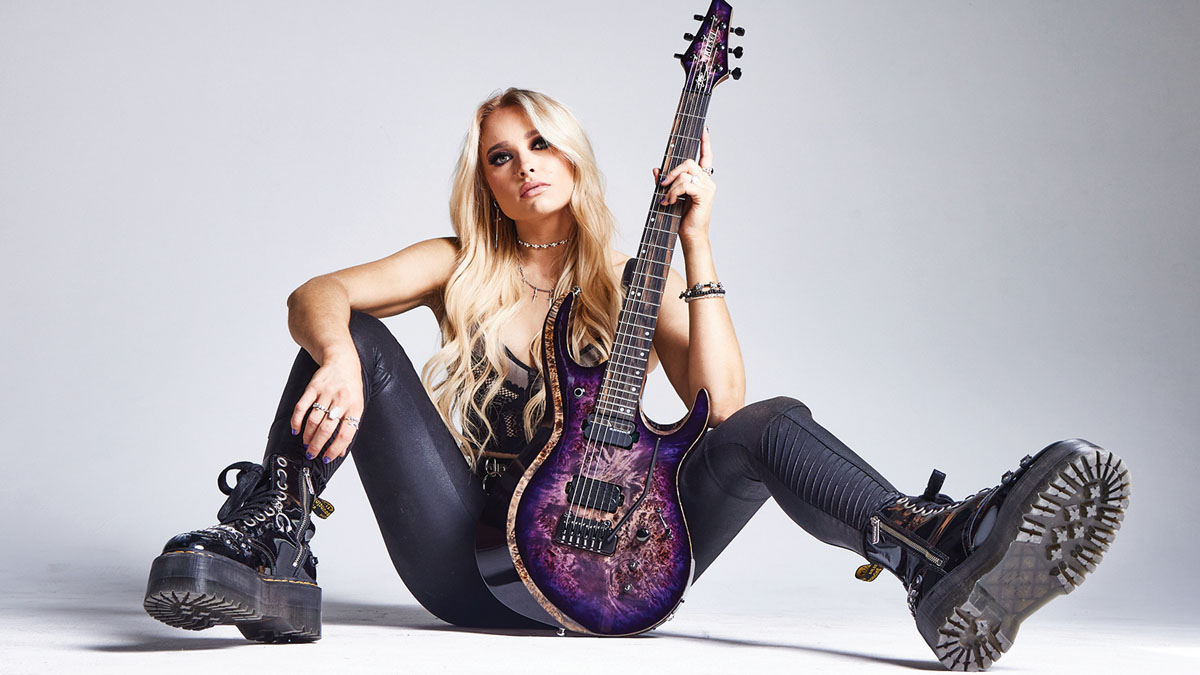
Everything was going so well for Sophie Lloyd. The 27-year-old British guitarist had recently completed her first tours of the U.S. and Europe as part of rap-rocker Machine Gun Kelly’s band. It was a heady time for Lloyd, who, despite her sizable following on YouTube and Instagram, had previously only played club and pub gigs around the U.K. before signing on for Kelly’s Mainstream Sellout tour in the spring of 2022.
Now she was playing big-time venues – Madison Square Garden, Wembley Arena, even the odd stadium or two – and she was “going down a smash.”
And then it all seemed to go a bit wonky. In February of this year, Lloyd’s name was suddenly in headlines throughout the media, but for reasons that had nothing to do with her prodigious shredding skills. It all started when Kelly’s fiancée, actress Megan Fox, sparked online rumors of a split, which prompted one fan to write, “He probably got with Sophie” on Fox’s Instagram page. And that’s all it took.
In a flash, Lloyd was clickbait fodder, with tabloid sites branding her “the other woman.” The speculation was quickly squashed by Lloyd’s management, and even Fox rushed to the guitarist’s defense, denying any kind of cheating scandal and writing on Instagram, “Sophie, you are insanely talented. Welcome to Hollywood. Your first unwarranted PR disaster.”
The brouhaha has since died down, and Lloyd can laugh about it now – somewhat. “It was a crazy time for me to be on the inside of all the media stuff,” she says. “Obviously, we all know the truth – it was complete bullshit – but it was wild to see this thing spread so fast and how everybody jumped on the bandwagon.”
Just as quickly, though, she pivots to a larger issue: the grim and, sadly, predictable stigma facing musicians who just so happen to be female.
“What I found especially upsetting was, the second there was some sort of drama, fingers immediately pointed at me,” she says. “It was like, ‘Oh, the girl musician – of course she’s at the root of it.’ Nobody would have said shit if I were the new dude in the band; they wouldn’t have suspected a thing. It was a bit unfortunate to be exposed to the toxicity of the media.”
Get The Pick Newsletter
All the latest guitar news, interviews, lessons, reviews, deals and more, direct to your inbox!
If there was any kind of silver lining to the episode, Lloyd can point to a dramatic uptick on her own social media accounts. “I got 20,000 more Instagram followers,” she says. “People have been saying such nice things about my playing, so that’s a plus, I guess.”
It was like, ‘Oh, the girl musician – of course she’s at the root of it.’ Nobody would have said shit if I were the new dude in the band
Lloyd’s online audience is, indeed, impressive: on YouTube, she boasts close to 900,000 subscribers, and, as of this writing, her Instagram followers number just over 800,000.
Since she began posting guitar-centric covers of her favorite songs (by everyone from Green Day to Iron Maiden), she’s racked up tens of millions of views and has dazzled ax enthusiasts with her breathtaking chops; from melodic legato soloing to turbo-charged tapping, she’s got it all.
Building on her success, Lloyd recently began re-imaging classic rock tunes in a series of “shred” videos in which she performs an entire track – vocal melodies and solos – in a blistering metal fashion. (Her operatic “shred” rendition of Pink Floyd’s Comfortably Numb, in which she balances thoughtful bluesy lyricism with hypersonic, gonzo soloing, has already been viewed close to five million times.)
She produces the videos along with her partner, Christopher Painter, who also plays drums on the clips. “I’ll do guitars and bass, and then we’ll listen to all the layers,” she says. “It teaches me a lot about composition. In terms of playing, I study the guitarists and try to get inside what they do. Like when I did Comfortably Numb, I tried to figure out David Gilmour’s scales and tones.
“That was a cool one because I learned how you can sound powerful even if you’re not shredding over everything; you sit back and let the music speak. It’s the same thing with the Stairway to Heaven video I’m doing. You speak through just a few notes; it’s all about your vibrato and phrasing.”
Lloyd’s stunning trajectory from successful online creator to high-level arena rocker might cause one to assume that it was all the result of a carefully crafted plan – a notion she quickly rejects.
“I just kind of wing it,” she says with a laugh. “The truth is, I never set out to be an online content creator. I joined YouTube back in the day because there wasn’t a real music scene where I grew up. I had to follow a more unconventional path. I didn’t plan to be a touring musician, either; in fact, I like staying at home and being with my family. But the Machine Gun Kelly opportunity came to me, I ended up doing it, and I discovered I really enjoy it. I just love making music, and I’m open to whatever exciting thing comes my way.”
Up till now, the only original music Lloyd has released has been instrumental – most notably, there was her debut EP, Delusions, issued in 2018. Recently, she began releasing singles from her upcoming full-length album, Imposter Syndrome, that will include an array of guest vocalists.
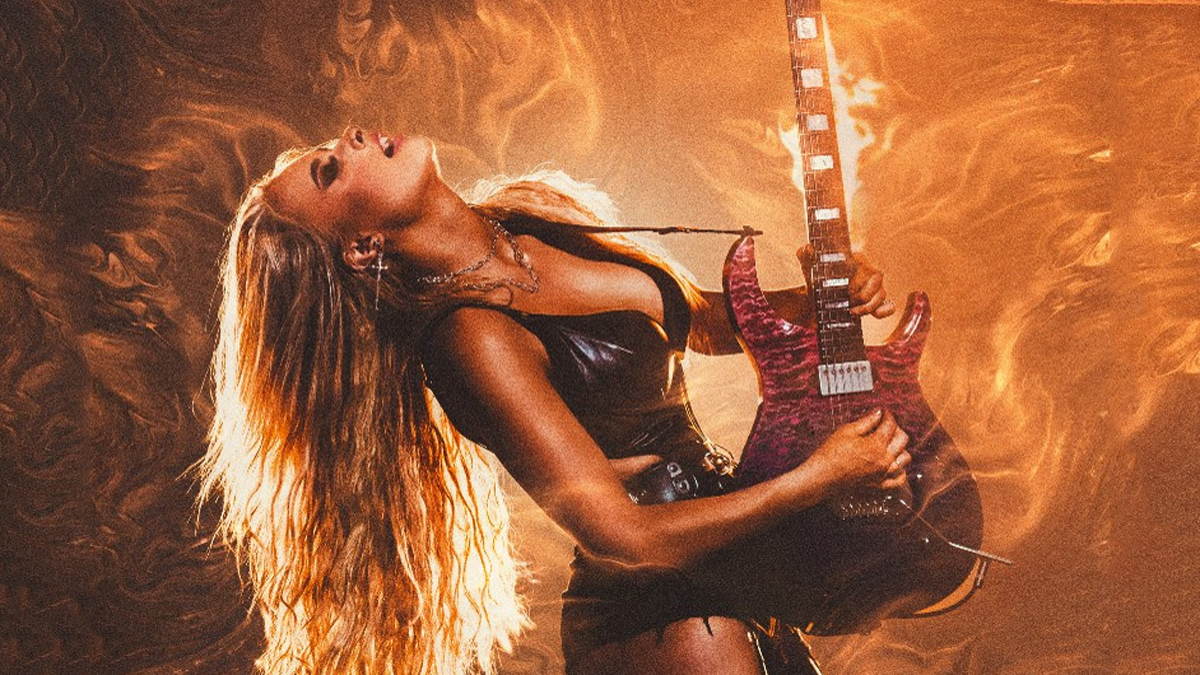
First up there was Do or Die, a blitzing shred-o-rama featuring Inglorious frontman Nathan James. Next up was the pile-driving Fall of Man, in which Trivium’s Matt Heafy – no slouch on the guitar himself – stepped back to allow for Lloyd’s commanding leads.
That track was soon followed by Hanging On, a swaggering stomper on which the guitarist teamed up with Canadian singer Lauren Babic. Lloyd is still completing work on the album (she just wrapped another raucous cut, Let It Hurt, with Black Stone Cherry’s Chris Robertson as well as Lost, an instrumental tune with fellow internet guitar star Cole Rolland), and she promises it will be a humdinger.
My dad said that if I learned Stairway To Heaven, he would buy me a PRS Mark Tremonti signature guitar
“I always said this album was going to be me paying homage to my 15-year-old self,” she says. “This is an album I wrote for that girl. I’m so fortunate to work with all of the amazing singers on the record, and I can honestly say I’ve been listening to them for years.
“I can’t tell you how gratifying it’s been – I’d write the songs, and then we’d send them off and hear back from the singers. They were like, ‘Yeah, I really dig this. I’m up for it.’ It’s all turned out better than I could have imagined.”
From what I understand, you started on the guitar as a child. Do you remember the moment when you knew you wanted to play?
“This is going to sound so embarrassing. It was actually when I watched SpongeBob SquarePants. [Laughs] It’s a great show. I saw the movie – they do a version of Twisted Sister’s I Wanna Rock, but SpongeBob sings, ‘I’m a goofy goober!’ They had the big band, and I thought it looked so incredible. I said, ‘Wow, I wanna do that!’”
SpongeBob rocked quite a bit. In one episode, he was a singer and Patrick played guitar. They rocked a stadium, and they had lights and lasers…
“[Laughs] Yeah, exactly! That was the start. Plus, my dad loved music, and he had all the classic rock around the house – Led Zeppelin, Joe Bonamassa, Rory Gallagher, all of these amazing blues guitarists. He didn’t play guitar, but because of him I was surrounded by music. I took a few classical guitar lessons when I was 10 or so, but I was like, ‘Nah.’
“Then I got an electric guitar – a Yamaha Pacifica – and I was like, ‘This is more like it.’ I got really into it. It was the classic sob story in school – I was a bit of an outcast and didn’t make friends. The guitar was my release and my escape. I found so much comfort from playing rock music. I’d come home from school and play for five or six hours.”
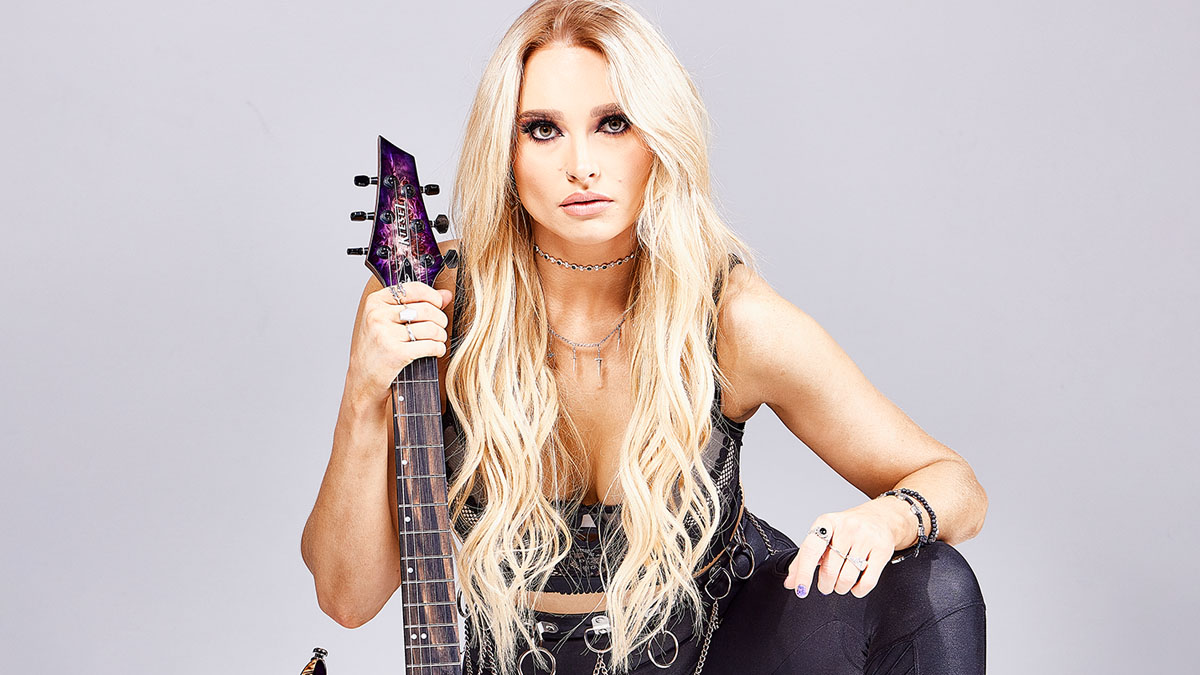
What kinds of songs were you playing?
“One of the first songs was Wild Thing. I did a thing called Rock Masters with Mike Hurst – he played guitar for Dusty Springfield. He’s like a second grandpa to me. I learned a lot from him. I had a bit of a natural feel for the guitar, but I also loved songwriting.
“Once I got chords nailed down, it unlocked the writing thing in me. Then I got more into the technical side, so I played along with Iron Maiden, Metallica, Avenged Sevenfold. I got it all down quite quickly. The first full solo I learned was Stairway to Heaven.”
Not bad.
“Yeah. My dad said that if I learned it, he would buy me a PRS Mark Tremonti signature guitar. I did learn it, and he made good on that promise. [Laughs] That was one of the first videos I put up on Facebook. I was, like, 14 or something. I watched it the other day because I’m writing a ‘shred’’ version of it. I enjoyed the challenge of learning solos. I didn’t get hung up on the patterns or shapes; I thought of everything quite logically, really. I just had an ear for it.”
You were in your mid-teens by this point, right?
“Yeah, I was about 16.”
Were you already thinking of playing guitar as a career?
“Well, no. It felt like a distant dream. Nobody around me played, and I didn’t know anybody in the music industry. In the real world, I felt isolated. At school, I said, ‘I want to learn music at university,’ and they were like, ‘No.’ I got a scholarship to study forensic science at university – I was a bit of a nerd. A week before I was going to go, I said, “I really want to give this music thing a go.’ Luckily, my parents were supportive, and I got into a music university in London.”
At this point, which guitarists were you really into?
“Joe Satriani. Surfing with the Alien was a record I wanted to learn from start to finish. Angel Vivaldi was another one; he’s a good friend of mine now. I also loved Andy James, Synyster Gates and, of course, Slash. I really delved into them. At uni, I discovered Eddie Van Halen and went wild on him.”
Surfing with the Alien was a record I wanted to learn from start to finish
You graduated from the British and Irish Modern Music Institute. Overall, was it a good experience?
“I have mixed opinions about music university. Ultimately, it was the right decision to go because of the people I met, but overall they tried to force me to be a session guitarist and be a carbon copy of everybody else. After a year, I realized I hadn’t played a song that I really loved.
“I learned gypsy jazz and other things, but that wasn’t where my heart was. I came home from uni and learned this emo song I liked, and it was then that I said, ‘I need to take my creativity and mold it into something I enjoy.’ That’s when I started writing my first EP, Delusions.”
Before that, you started making your own videos.
“That’s right.”
How long did it take you to feel comfortable on camera?
“A while. Do you ever feel 100 percent comfortable with a camera on you? [Laughs] It’s good to look back at the videos and see the progress, which is why I started doing them in the first place. I didn’t know you could make money on YouTube. One of the first videos I made was Nightmare by Avenged Sevenfold.
“Cut to last year and I’m sitting watching it with [bassist] Johnny Christ from the band. We had a big laugh about it. [Laughs] Some of the videos are a little cringey, but that’s OK. I’m not going to delete the older ones. I think it’s important to have reference points.”
It’s good to look back at the videos and see the progress, which is why I started doing them in the first place. I didn’t know you could make money on YouTube
How did you learn about guitars and gear? Trial and error?
“I watched a lot of videos on YouTube. I loved PRS for a long while, but then Rob Caggiano from Volbeat introduced me to Kiesel and I got into them. They’re very customizable, which I quite like. It was a similar thing with pedals and amps.
“I played a Diezel VH4 for a while; working in a studio really gave me an idea of what sounds I liked. Doing my videos, I started getting more into guitar software; I’ve been using the [Neural DSP] Archetype: Nolly. A lot of it’s just been from doing research, looking around online and talking to people.”
I know you said you’re not big on planning, but what do you think you’d be doing if the Machine Gun Kelly gig hadn’t come up?
“Well, I do a lot of solo stuff, and we’re doing the album at the moment. I wanted to do some live shows with my partner and different vocalists. That’s sort of what we’re doing. I was in a smaller local band for a few years – Marisa and the Moths.
“They were sort of a grungy rock band with some shred solos. We did club and pub gigs around the U.K. There weren’t big crowds, but I had a great time playing with them, and I learned so much. I left the band during quarantine. I just wanted to push my own music.”
How did the Machine Gun Kelly gig come about? Did he see you online and reach out to you?
“It was the drummer’s dad who found me, actually. Then Kels reached out and we had a FaceTime. We vibed and all went well. I sent over a video compilation of me performing live. This was only a few weeks before they had to go on tour; they had to make a decision quickly. I’m grateful that they kind of took a chance on me. I didn’t have to do an audition or anything.”
You just showed up to a rehearsal in the States, and that was it?
“Yeah, pretty much. They sent me over songs to learn, and I spent a lot of time going over them and making notes. I felt prepared. The guys were lovely and made me feel welcome as soon as I walked in.
“Kels wasn’t there on the first few days, so that was a bit of pressure off. The first day was quite stressful, though, because it was such a different environment for me – there was this massive crew and everything. I had to snap out of my imposter syndrome and be like, ‘No, it’s OK. You do belong here. You deserve this.’”
The imposter syndrome is a thing... I feel like I’ve broken out of that now. I proved to myself, like, ‘Yeah, you’re here for a reason. You’re good enough
All right, hold on. This phrase “imposter syndrome” almost implies you’re not good enough. Do you actually feel that way?
“Well, the imposter syndrome is a thing. It’s a phenomenon a lot of people experience in any field; not just music, but you basically feel like you’re an imposter. You don’t deserve to be where you are, and at any moment people will uncover you for what you are. I feel like I’ve broken out of that now. I proved to myself, like, ‘Yeah, you’re here for a reason. You’re good enough.’”
Were you a fan of Machine Gun Kelly’s music before this whole thing happened?
“Yeah. I’d heard some of his songs, but not that many. He’s not as big in the U.K. as he is elsewhere. He had some good songs with Yungblud and Halsey – I knew him through a lot of his collaborations.”
Was it immediately understood that you would have some musical leeway in the band?
“Yeah, he said from the beginning that he’s super-open. He loves the live experience and the idea of changing things around. He loves showcasing the talent of his bands because the bands are so talented. The other guitarist I play with, Justin Lyons, is one of the most amazing guitarists I’ve ever seen.
“Kels wants to give everybody a chance to shine. He always likes to say. ‘We’re Machine Gun Kelly together.’ It’s just really nice. I know a lot of people make comments: ‘Oh, they’re not talented, blah blah blah. They’re not good.’ But if you could be in the room with us, you’d be amazed at the talent.”
Going from playing to small crowds to amphitheaters and arenas must have been quite an adjustment. Were you scared?
“It was the ultimate challenge, and I had to sort of fight through my demons and get on with it. I practiced so much before that first gig. I had built it up that I’d be nervous. I thought it would be really nerve-racking, but the moment I stepped on stage, everything melted away and it felt like I was meant to be there.
“I saw all the faces and the signs and everything. I was surprised at how I took to it. I love watching everybody get crazy. The band would jump off shit, so I started doing some stunts as well. It’s been fun.”
Matt Heafy was crazy ’cause I was such a big fan. There’s a picture of me taken on the first day of recording my Delusions album in a homemade Trivium T-shirt
You’ve been previewing cuts from your album while you record. You were a big Trivium fan growing up. What was it like working with Matt Heafy?
“Oh, he’s so nice. It was honestly incredible. Everyone on this album has just been so nice as well. Yeah, Matt Heafy was crazy ’cause I was such a big fan. There’s a picture of me taken on the first day of recording my Delusions album in a homemade Trivium T-shirt. It feels kind of full circle that I get to work with him. And it was fun to go to Florida and film the video with him. He got the vision kind of straight away.
“Also, we recorded the track over Twitch, so that was quite interesting. I feel like it’s a modern way to record a song because we got that immediate feedback from fans about what they liked, what they didn’t like, if the lyric was good or if it was bad. He was like, ’Should I redo that scream? Was that, like, shit?’ It was cool to have that kind of live feedback there while he was writing. So yeah, that was a really fun way to do it.”
Why didn’t Matt play guitar on the track?
“We wrote the full instrumental before sending it to him. I think Matt was up for trying something a bit different. It was the first collab he’d done without his guitar. It really allowed him to showcase his voice. But I’d love to one day do another song with both of us playing on it.”
Let It Hurt with Chris Robertson is quite strong. Of everything I’ve heard, the riffs are killer. Do those come easily to you?
“I love writing riffs – they’re such a big part of constructing a song. With a lot of these songs, we’d have a vocalist in mind, so I’d sit down and write. I’d listen to a lot of music and tinker around, maybe flip it backward and then change out some of the chords. I just really enjoy building songs from start to finish.”
Are you thinking of forming a band with one dedicated singer?
That’s what we’re trying to think about: ‘How do we tour this?’ We’ve got a few ideas. We’re not sure whether we want to get a full-time vocalist – well, maybe. I guess it’s just about finding a vocalist that fits you and inspires you. We might try something where we have big screens and we get vocalists to record a performance. The violinist Lindsey Sterling does that. Visually, it’s pretty amazing.”
Are you at liberty to talk about how long you plan to stay with Machine Gun Kelly?
“I’m not really sure. I really enjoy working with him and touring with him. We’ll sort of see what direction he wants to go in as well. I think he wants to go more into the rap side of things again, so it’s sort of seeing where I’ll fit into that. I’m passionate about my solo career, of course. I’m taking each day as it comes, taking whatever adventures I can get.”
Let’s talk about your guitar, particularly your signature model from Kiesel.
“I wanted my Kiesel signature to be a shred guitar. It’s got a Sustaniac, which I first saw on Manson guitars. Matt Bellamy uses them, and they make just crazy noises. I wanted to sort of adapt it so you could do it on a shred guitar.
I’ve got everything where I want it on this guitar. I love Kiesel’s Aries guitar shape, so I knew I wanted something similar to that
“It’s got a very thin walnut neck with a purple heart stripe, but it can be customized for the number of stripes. We’ve got the royal ebony fingerboards, which gives you quite a warm round tone. And we use black limba for the body, which has similar tonal characteristics to mahogany, but it’s way lighter. The guitar is super light, and you can swing it – I like to do that on stage. It comes in purple, but people will be able to choose their own colors.
“I’ve got everything where I want it on this guitar. I love Kiesel’s Aries guitar shape, so I knew I wanted something similar to that. And being a girl, well, you have to think a little bit about the boob placement. Some guitars don’t fit as well under there.”
That’s important.
“[Laughs] Yeah. You can buy it without the Sustaniac and whammy bar if you don’t want to go super-crazy.”
What about amps?
“I’m using Blackstar a lot. They’re a great amp company. I’m still using my Diezel for tones, but I also use the Neural Archetype. When I’m out with MGK, we use Kempers; they’re very convenient for flying overseas and stuff. I’m exploring a lot of different amps. We’ve used the EVH 5150 on the album. I absolutely love the sound of that. I’m not sold on any particular amp.”
Do you use a lot of pedals, or is it a lot of software?
“There’s pedals, but we are using the Neural Quad Cortex. It’s cool because it’s got the pedals built in. I still have a kind of pedalboard, but I don’t use much other than some reverb. I love the TC Electronic Hall of Fame Reverb and some delay. I don’t use a massive amount of crazy effects.”
Do you feel like you’re part of a revolution, going from an online presence into a major band situation?
“I guess so, but I don’t know. I skipped a few steps, I guess. For me, it’s been both a blessing and a curse. If I grew up in an area with a music scene and a lot of bands, I would have taken advantage of that. It’s interesting that I’ve been able to enter touring at such a high level. People always say, ‘You haven’t paid your dues,’ but I feel as though I’ve done that in a different way. I’m not the first person to do this by any means.
If I didn’t have this online thing, I don’t know how things could have unfolded
“But I think it’s cool that my journey has been documented. I think we’re definitely going to see a lot more of that, especially with TikTok and stuff. I was always worried before because this never seemed like a viable career to me. I didn’t know anybody in the music industry. I didn’t have anywhere I could fit. If I didn’t have this online thing, I don’t know how things could have unfolded.
“I think it’s amazing that social media can open up all of these doors for people and allow other people to see them. At the same time, things get oversaturated and there’s obviously the downside to that, but overall it’s a new direction for music, and I think we all just kind of need to adapt to it. There’s so much amazing music, and people are doing incredible things. I think it’s really exciting.”
- Follow Sophie Lloyd on YouTube.
Joe is a freelance journalist who has, over the past few decades, interviewed hundreds of guitarists for Guitar World, Guitar Player, MusicRadar and Classic Rock. He is also a former editor of Guitar World, contributing writer for Guitar Aficionado and VP of A&R for Island Records. He’s an enthusiastic guitarist, but he’s nowhere near the likes of the people he interviews. Surprisingly, his skills are more suited to the drums. If you need a drummer for your Beatles tribute band, look him up.
“Tom would say, ‘Play your guitar with a car key.’ It was very experimental”: Little Feat's Fred Tackett recalls Tom Waits' left-field approach to guitar playing – and his one-of-a-kind studio sessions
“Seeing friends and heroes of mine having their solos plagiarized broke my heart”: Giacomo Turra used their solos note-for-note for his own viral content. Now the guitarists who had their playing “stolen” are speaking out










